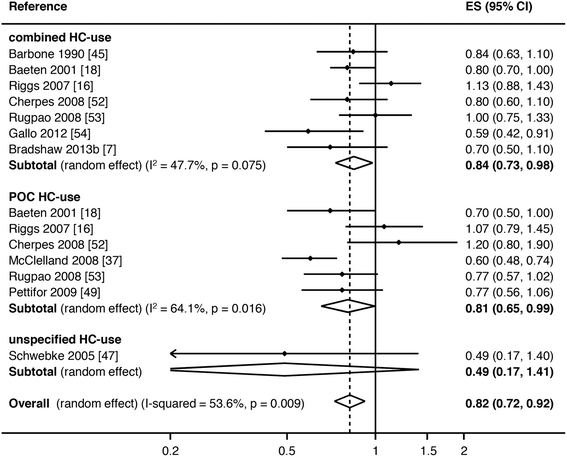Making inroads into improving treatment of bacterial vaginosis - striving for long-term cure
- PMID: 26219949
- PMCID: PMC4518586
- DOI: 10.1186/s12879-015-1027-4
Making inroads into improving treatment of bacterial vaginosis - striving for long-term cure
Abstract
Bacterial vaginosis (BV) is one of the great enigmas in women's health, a common condition of unknown aetiology, which is associated with significant morbidity and unacceptably high recurrence rates. While it remains unclear whether BV recurrence is predominantly due to failure of current antibiotic regimens to eradicate BV-associated bacteria (BVAB) and biofilm, a failure of some women to re-establish a resilient Lactobacillus-dominant vaginal microbiota, reinfection from sexual partners, or a combination of these factors, it is inherently challenging to make significant inroads towards this goal. In this review, we will outline why BV is such a clinical and epidemiologic conundrum, and focus on several key approaches that we believe merit discussion and clinical research, including strategies to: i) prevent reinfection (partner treatment trials), ii) boost favourable vaginal Lactobacillus species and promote a Lactobacillus-dominant vaginal microbiome (hormonal contraceptive and probiotic trials) and iii) disrupt vaginal BV-associated biofilm.
Figures





Similar articles
-
Bacterial vaginosis: drivers of recurrence and challenges and opportunities in partner treatment.BMC Med. 2021 Sep 2;19(1):194. doi: 10.1186/s12916-021-02077-3. BMC Med. 2021. PMID: 34470644 Free PMC article. Review.
-
Probiotics in the prevention of recurrences of bacterial vaginosis.Altern Ther Health Med. 2014 Winter;20 Suppl 1:52-7. Altern Ther Health Med. 2014. PMID: 24473986 Review.
-
An exploratory pilot study evaluating the supplementation of standard antibiotic therapy with probiotic lactobacilli in south African women with bacterial vaginosis.BMC Infect Dis. 2019 Sep 18;19(1):824. doi: 10.1186/s12879-019-4425-1. BMC Infect Dis. 2019. PMID: 31533663 Free PMC article. Clinical Trial.
-
Testing the regulatory framework in South Africa - a single-blind randomized pilot trial of commercial probiotic supplementation to standard therapy in women with bacterial vaginosis.BMC Infect Dis. 2020 Jul 10;20(1):491. doi: 10.1186/s12879-020-05210-4. BMC Infect Dis. 2020. PMID: 32650729 Free PMC article. Clinical Trial.
-
Vaginal Microbiota.Adv Exp Med Biol. 2016;902:83-93. doi: 10.1007/978-3-319-31248-4_6. Adv Exp Med Biol. 2016. PMID: 27161352 Review.
Cited by
-
The right bug in the right place: opportunities for bacterial vaginosis treatment.NPJ Biofilms Microbiomes. 2022 May 2;8(1):34. doi: 10.1038/s41522-022-00295-y. NPJ Biofilms Microbiomes. 2022. PMID: 35501321 Free PMC article. Review.
-
Drug and therapeutic intravaginal delivery targeting diseases in the female reproductive tract: A mathematical modeling perspective.J Control Release. 2025 Aug 10;384:113924. doi: 10.1016/j.jconrel.2025.113924. Epub 2025 Jun 2. J Control Release. 2025. PMID: 40466740 Review.
-
Viral Infections, the Microbiome, and Probiotics.Front Cell Infect Microbiol. 2021 Feb 12;10:596166. doi: 10.3389/fcimb.2020.596166. eCollection 2020. Front Cell Infect Microbiol. 2021. PMID: 33643929 Free PMC article. Review.
-
Reviewing the Composition of Vaginal Microbiota: Inclusion of Nutrition and Probiotic Factors in the Maintenance of Eubiosis.Nutrients. 2020 Feb 6;12(2):419. doi: 10.3390/nu12020419. Nutrients. 2020. PMID: 32041107 Free PMC article. Review.
-
Bacterial Vaginosis: Guideline of the DGGG, OEGGG and SGGG (S2k-Level, AWMF Registry No. 015/028, June 2023).Geburtshilfe Frauenheilkd. 2023 Nov 3;83(11):1331-1349. doi: 10.1055/a-2169-8539. eCollection 2023 Nov. Geburtshilfe Frauenheilkd. 2023. PMID: 37928409 Free PMC article.
References
-
- Koumans EH, Sternberg M, Bruce C, McQuillan G, Kendrick J, Sutton M, et al. The prevalence of bacterial vaginosis in the United States, 2001–2004; associations with symptoms, sexual behaviors, and reproductive health. Sex Transm Dis. 2007;34(11):864–9. doi: 10.1097/OLQ.0b013e318074e565. - DOI - PubMed
Publication types
MeSH terms
Grants and funding
LinkOut - more resources
Full Text Sources
Other Literature Sources
Medical

